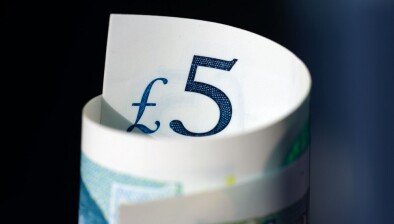Scottish GDP growth lagging behind rest of UK

Kate Forbes
Scotland’s economy trailed the rest of the UK in growing by 0.4% in the first quarter of 2025, according to new Scottish Government figures.
Gross domestic product (GDP) was estimated to have increased by 0.4% in the first three months of the year, compared to growth of 0.7% across the UK.
Scotland’s onshore GDP is estimated to have contracted by 0.2% in March. This follows unrevised contraction of 0.2% in February.
In March, the sectors with the largest negative contribution to overall GDP were electricity and gas supply and information and communications which each contributed around -0.2 percentage points towards headline GDP.
The largest positive contributor was accommodation and food services, which contributed around 0.2 percentage points of growth towards headline GDP.
Commenting on the figures, Deputy First Minister Kate Forbes said: “It is encouraging to see quarterly growth continuing and getting stronger in Scotland – following a 0.1% rise at the end of 2024.
“In the face of ongoing global challenges dynamic steps are being taken to grow and transform Scotland’s economy.
“We are pursuing new investment, building export potential and supporting innovation.
“Last week the First Minister announced that US green aircraft engine developer ZeroAvia is to establish a new manufacturing base in Scotland, creating around 350 jobs.
“Meanwhile, our Programme for Government includes a Six Point Export Plan to help businesses tap into new markets and increase sales.
“However, our limited powers mean we also require decisive action from the UK Government to counter the damaging economic impacts of Brexit and tackle the economic uncertainty currently being felt by business, workers and families – including the reversal of its damaging decision to increase employers’ national insurance contributions.”
Kevin Brown, savings specialist at Scottish Friendly, said the figures were “disappointing but not disastrous, and certainly isn’t a signal to panic”.
“The gap between Scotland and the UK isn’t huge, and with the right conditions – stable inflation, improved consumer confidence, and no escalation in global trade tensions – growth could quickly pick up,” he continued.
“On a more positive note, the domestic picture looks to be improving. Inflation did spike in April, mainly due to higher utility bills, but the worst of that pressure should ease later in the year. The recent rate cut has also taken some strain off borrowers, even if it came at the expense of savers.
“Worries over a potential trade war have eased, which is good news for key Scottish exports such as whisky and salmon, but they haven’t disappeared entirely. A fresh flare-up in global tensions would hit both Scotland and the UK hard, meaning that the near-term outlook remains clouded by uncertainty.
“The outlook remains finely balanced, which is why households would do well to stay proactive. In other words, now could be the time to make every pound count.
“Whether it’s locking in better savings rates or investing for the long term, make your money work as hard as possible and use the ongoing uncertainty as a reason to try and bolster your household finances wherever possible.”






